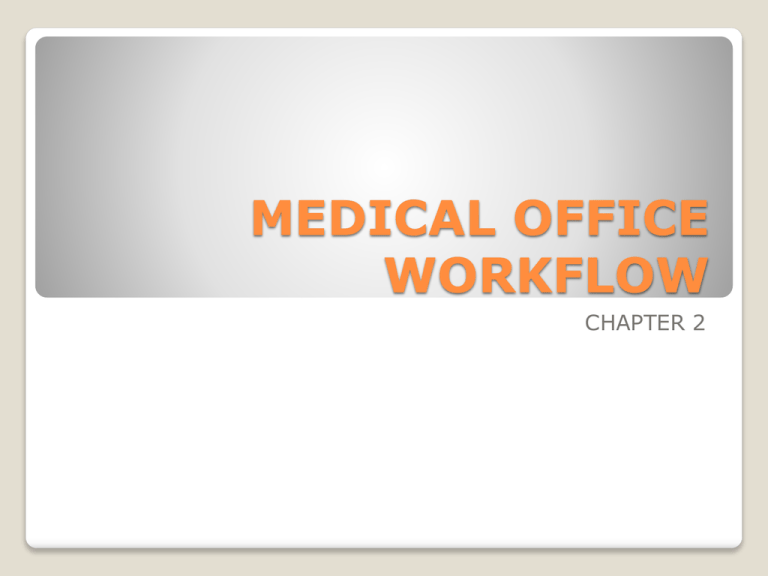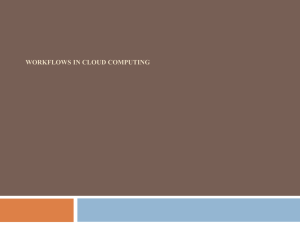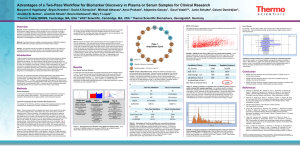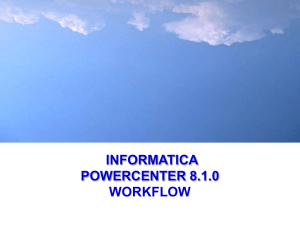Electronic Health Records2
advertisement

MEDICAL OFFICE WORKFLOW CHAPTER 2 Gain brief understanding of medical office workflow systems and their complications Learn about the categories of medical office workflow and their major processes Develop a familiarity with MedTrak’s rules-based methodology for medical office workflow OBJECTIVES Medical office workflow systems Revenue cycle management Clinical staff collaboration Improving communications Automating paperwork Medical processes Detailed clinical step Presenting problems Patient tracking Rules-based Specialized dashboards Screen sequences Clinical objects Evidence based KEY CONCEPTS ◦ ◦ ◦ ◦ ◦ ◦ ◦ ◦ ◦ ◦ ◦ Medical office workflow systems: Lower costs Increase quality of care at every level Increase efficiency Reduce patient throughput time Integrate rules-based problem solving with evidence-based actions Focus on supporting clinical staff Improves collaboration Improves communications Automates paperwork Integrates rules-based problem solving INTRODUCTION Medical office workflow system Enables the clinicians to always complete every step in patient’s care Ensuring patient’s care always meets clinic standards Enables the clinical staff to determine next step in clinical process Reduces stress level by providing up-tothe-second tracking information for each patient in the facility MEDTRAK Physician-direct responsibility for patient care Nursing staff-support physician by carrying out their orders Front desk personnel-schedule, register, collect payments Administrative staff-monitor patient charts & outside communications Billing staff-prepare, send out bills and record payments MEDICAL DISCIPLINES HIERARCHICAL STRUCTURE Schedule and Appointment Register a patient Treat a Patient Patient Intake Initial contact-Physician Open orders processing Additional orders MEDICAL OFFICE WORKFLOW CATEGORIES Referrals-Physician Diagnosing-Physician History and exam-Physician Prescribing-Physician Aftercare instructions-Physician Evaluation and management-Physician Patient discharge Payment collection Incomplete charting Bill for the encounter Payment posting and collections MEDICAL OFFICE WORKFLOW CONTINUED Steps for effective clinical workflow: 1. Specialized Dashboards that model clinical workflow 2. Screen Sequences automatically guide users through data capture 3. Functionality attached to clinical objects to complete their characteristics 4. Orders that trigger sequences of questions which enable evidence-based actions RULES-BASED METHODOLOGY Clinic status screen Incomplete visit screens-pending chart completion Unbilled charges dashboard Accounts receivable dashboard Referrals dashboard Surgeries needing authorization dashboard SPECIALIZED DASHBOARDS Scheduling appointments Registration processing for private paygroup health Registration processing for workers’ compensation and employee health Payment processing SCREEN SEQUENCES Attaching payers with subscriber information to patients Attaching workers’ compensation insurance to companies Attaching initial injury drug screens and physical examinations to companies Building specific care rules for a patient Rates assigned by billing codes to specific procedures FUNCTIONALITY Imaging orders (x-rays, MRIs CT scans) Laboratory orders(drug screens, blood tests) Ancillary orders(hearing, eye, pulmonary function tests) Treatments for injuries(surface traumas, orthopedics Treatments for systems(HEENT, cardiology, dermatology) Follow-up treatments)dressing changes, suture removals) Medication treatments(injections, vaccines) Referrals to outside specialists Dispense and prescribe medications Administrative orders (form completion, extra services) ORDERS Chapters 3-6 you will: add patients-use MedTrak Online User attach payers to a patient schedule patients After chapter 6 you will learn: how to use MedTraks clinical workflow system to process patient responsibilities entire revenue cycle process scheduling & registering patients refunding credit payments point-of-care clinical processing that produces charges and appropriate billing codes What’s coming up? Guide










